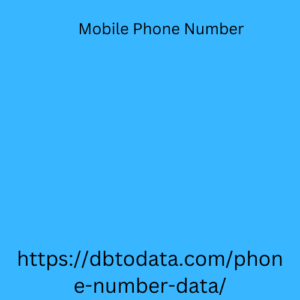Analyzing Email Open Rates
Another approach to determining if an email has been read is by analyzing email open rates. While this method may not provide the same level of granularity as read receipts or email tracking software, it can still offer valuable insights into the overall engagement and performance of your email campaigns.
Open rates are a metric that measures the percentage of recipients who have opened a particular email. This information can be obtained through the email service provider’s reporting or analytics tools, or by integrating with a third-party email marketing platform.
By monitoring open rates over time, you can gain a better understanding of how your email content and subject lines are resonating with your audience, and make informed decisions to optimize your email strategy.
It’s important to note that open rates can be influenced by various factors, such as the email client’s ability to display images or the recipient’s email settings. Additionally, some recipients may open an email without actually reading the entire message, so open rates should be interpreted in the context of other engagement metrics, such as click-through rates and response rates.
Leveraging Email Client Features
Many email clients, both desktop hong kong phone number list and web-based, offer built-in features that can provide insights into whether an email has been read. While these features may not be as comprehensive as dedicated email tracking tools, they can still be a valuable resource for those looking to monitor the status of their email communications.
One such feature is the “read receipt” or “delivery receipt” functionality offered by various email clients. This feature allows the sender to request a notification when the recipient has opened and read the email. However, as mentioned earlier, the effectiveness of this feature can be limited by the recipient’s willingness to grant the read receipt request.
Another useful feature is the ability to view the “read status” of an email within the client’s interface. This information is typically displayed as an icon or a visual indicator next to the email message, indicating whether the recipient has read the email or not.
Additionally, some email clients, such as Gmail, offer advanced search and filtering options that allow you to sort your inbox by read status. This can be particularly helpful when trying to identify which emails have been read and which ones may still require your attention.
Analyzing Email Engagement Metrics
Beyond simply determining if an Georgia phone number email has been read, it’s also valuable to consider the broader context of email engagement. By analyzing a range of metrics, you can gain a more comprehensive understanding of how your email communications are performing and identify areas for improvement.
Some key email engagement metrics to consider include:
- Open Rate: The percentage of recipients who have opened your email.
- Click-Through Rate (CTR): The percentage of recipients who have clicked on one or more links within the email.
- Reply Rate: The percentage of recipients who have responded to your email.
- Unsubscribe Rate: The percentage of recipients who have opted out of receiving your emails.
- Forwarding Rate: The percentage of recipients who have forwarded your email to others.
By tracking and analyzing these metrics, you can identify patterns and trends in your email performance, allowing you to refine your messaging, subject lines, and overall email strategy to better engage your audience.
Considerations and Limitations
While the methods and techniques discussed in this blog post can provide valuable insights into whether an email has been read, it’s important to consider certain limitations and potential drawbacks:
- Privacy Concerns: Some recipients may view email tracking or read receipt requests as an invasion of their privacy, and may choose to disable or decline these features. It’s essential to respect the privacy of your email recipients and strike a balance between gathering useful information and maintaining trust.
- Technological Limitations: The effectiveness of email read tracking can be influenced by factors such as the email client, device used, and email settings of the recipient. In some cases, read receipts or tracking pixels may not be supported or may be blocked by the recipient’s email client or security software.
- Engagement vs. Action: It’s important to remember that just because an email has been read does not necessarily mean the recipient has taken the desired action, such as responding, clicking a link, or making a purchase. Email engagement metrics should be interpreted in the broader context of your communication goals and desired outcomes.
- Ethical Considerations: When utilizing email tracking or read receipt features, it’s crucial to ensure that you are adhering to applicable laws and regulations, such as the General Data Protection Regulation (GDPR) or the CAN-SPAM Act. Failure to comply with these guidelines can result in legal and reputational consequences.
Conclusion
Determining whether an email has been read is a valuable skill in today’s digital landscape, with numerous practical applications for individuals and businesses alike. By understanding the available methods and techniques, including email read receipts, email tracking software, open rate analysis, and email client features, you can gain valuable insights into the engagement and responsiveness of your email communications.
However, it’s essential to balance the benefits of email read tracking with the need to respect the privacy and preferences of your email recipients. By approaching this topic with a thoughtful and ethical mindset, you can leverage the power of email analytics to optimize your communication strategies and drive meaningful business outcomes.
Remember, the ultimate goal should be to foster effective and mutually beneficial email relationships, not to simply track and monitor your recipients’ behavior. By striking this balance, you can harness the power of email to enhance your personal and professional success.

